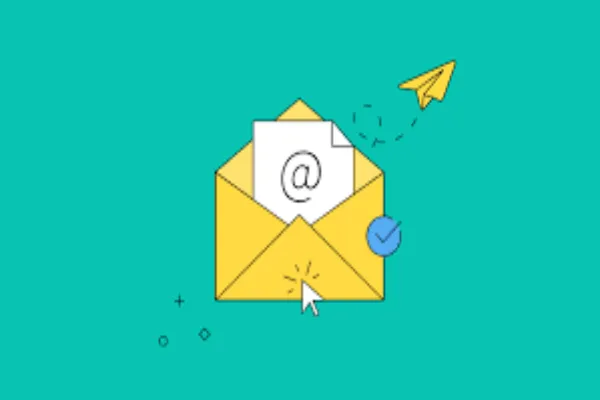Tips to Gather Data for Effective Personalization in Email Marketing

Modern businesses are increasingly finding ways to keep their customers constantly engaged. Email is one such way that enables brands to get new people to sign up and engage with their business. But making it effective has become a challenge nowadays. This is because, on average, a person receives 121 emails every day, which makes it difficult for companies to get noticed in this crowd.
Personalized email marketing can be a solution to this challenge, which can help in capturing users’ attention quickly. By carefully curating content for every individual, organizations can build strong relationships with their users. To achieve these results, gathering and analyzing customer data such as their preferences, behavior, and interests is crucial. If businesses can dig into what their customers want, they can shape their communications with audiences and drive increased sales using personalization in email marketing.
Role of Data in Personalized Email Marketing
Customer data forms the base of a personalized email campaign. It enables a company to create an email comprising information that resonates with the recipient’s unique needs and preferences. Companies can use lots of different customer information to develop content that speaks specifically to every single customer and feels curated.
Demographics, purchase history, browsing behavior, social media interactions, and contextual data are some of the information that businesses can use to understand their customers better. This information lets brands sort people into groups and refine marketing efforts for each group. This can lead to various benefits like higher open rates, increased engagement, better ROI, and a rise in revenue. Personalized email marketing powered by customer data enables organizations to provide a more engaging and meaningful experience for their customers.
8 Best Data Gathering Methods
Data collection from various sources is one of the essential steps in creating effective personalized email campaigns. This process empowers businesses to gain deep insight into what their customers like, what their interests are, and what they expect. As a result, they can engage with customers through emails that resonate with their interests. Here are some ways in which businesses can collect data from their customers for effective personalized email marketing.
1. Email Subscription Forms
Organizations can use subscription forms or sign-up forms to collect basic information about their customers. These include their name, demographics, birthday, and other non-invasive information required for the brand.
These forms can be incorporated within a website and social media platforms to collect data from potential customers. This information can help brands apply personalization in email marketing by addressing customers with their names, greeting them on their birthdays, or sending offers specific to their location.
2. Browser Tracking Methods
Tracking website behavior provides companies with information on how customers interact with their website. This method of data collection uses cookies to track a customer’s behavior on their website. Brands can use this data to understand what topics and preferences people like currently and craft personalized email marketing messages featuring products of their interest.
3. Leveraging Integrations
Businesses can integrate their websites with different tools to collect and study the data that people share. For example, integration with customer relationship management (CRM) systems can give information about how and when users are frequently interacting with the website.
This helps companies to time their personalized email campaigns. They can also make use of Google Analytics to get information about who visits their website and what pages people click. This aids in identifying popular products and including them in emails.
4. Conducting Surveys
Users subscribing to a brand’s email newsletter showcase their interest in the company’s products and services. This list of subscribers can be capitalized to learn more about the customer’s interests and preferences. Brands can ask their customers to fill out survey forms in exchange for a discount or offer. Through this survey, brands can get to know about customers’ pain points, preferences, and expectations.
5. Monitoring Social Media Interactions
Social media platforms can empower organizations to learn more about their target audiences. With social media monitoring tools, organizations can track brand mentions, analyze sentiment, and audience engagement and trends. This can help to create content that resonates with customers and achieve personalization in email marketing.
6. Utilizing Purchase History
Businesses can employ artificial intelligence and machine learning to analyze their own available data, such as purchase history, to identify patterns in buying habits and preferences. This analysis lets businesses sort people into different groups depending on how much they spend, spot how often people buy things, and also find which products are popular. This information can be used in creating personalized email campaigns for customer re-engagement and cross-selling.
7. Data Extraction from UGC
User-generated content (UGC) such as testimonials, reviews, and ratings can provide information about customer expectations, product popularity, and pain points. By identifying whether customers are satisfied or not with current products or services, companies can address them accordingly through personalized email marketing. This helps to build strong customer relationships and improve retention rates.
8. Interactive Polling
Organizations can engage their subscribed email list with interactive polling while gathering necessary information about customer preferences. Businesses can put together polls dealing with preferences among customers, expectations for products, and pain points. With this information, organizations can send messages that suit customer preferences and implement personalization in email marketing.
Bottom Line
Personalizing emails starts with collecting good quality data. By gathering insights related to customer preferences from multiple sources, organizations can craft emails that are relevant to users. When used correctly, this data will increase open rates, enhance relationships with customers, and improve conversion rates.
But collecting data is not enough to create effective personalized email campaigns. To get the most from campaigns, companies need to use some proven best practices. These include making sure that data has enough quality, following privacy rules, and using data in an ethical way. A well-structured data strategy ensures that personalized email marketing remains both effective and responsible.
Businesses can employ technological advancements like AI, predictive analytics, and machine learning to further refine email customization efforts. Businesses that embrace technology-driven personalization in email marketing can stay ahead in customer engagement, deliver hyper-personalized experiences, and drive long-term trust and loyalty.







